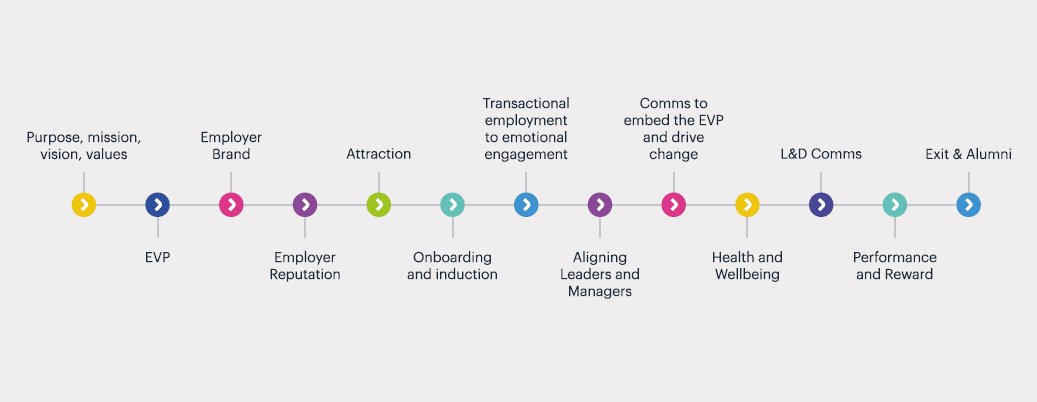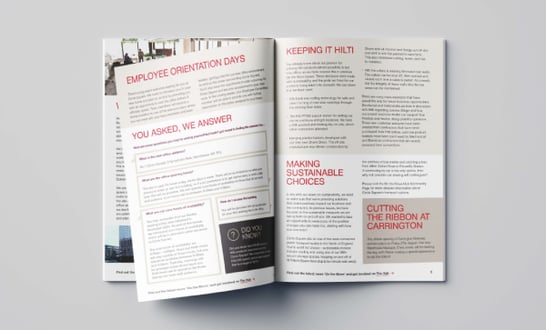In this webinar, our guest expert was John Tarrant from employer brand and employee engagement experts, DNA.
This webinar took place in September 2021 with UK still experiencing the effects of Covid and multiple lockdowns, but many of the lessons learnt then are still relevant today.
What changed in employee engagement since the start of the pandemic?
In the engagement surveys we ran, employee engagement went up across the first few months after Lockdown 1. There was a sort of “blitz spirit.” Lots of our clients were doing Zoom calls and they were doing quizzes on a Friday, Yoga, cookery lessons, the lot. It was great! But people’s resilience gets tested and within about six to nine months you can see the shoulders sag collectively. Not just with HR Directors, but across the board.
The key trends we’re now seeing in those surveys:
- The response rates have increased dramatically. Our last three surveys have had a 95/96% response rate. To a certain extent, that’s unheard of.
- Employees’ expectations have increased, they demand a voice and they want to shape the employment experience.
- Leaders are looking more and more to their employees to give valuable feedback which changes their workplace. They’re putting in the work to ask the right questions.
- Now, more than ever, people are seeking meaning in their work.
How do you improve employee engagement?
Step 1 is to put together a survey and send it out. But it shouldn't be a survey for the sake of it. You need to ask your employees the right questions, the brave questions. We have a suite of 60 questions, but you’d never want to ask that many. The sweet spot is 26-28. More importantly, you’ve got to act on what you’re being told. It’s pointless collecting the data if you’re not going to do anything with it.
Since the pandemic, people are seeking meaning in their work. Reinforcing a purpose, mission, or vision can be extremely impactful. In the 18 months after the pandemic started, companies re-evaluated who they are, what they do, why they exist, and what's the good that they do. At DNA, we call this the power of purpose. You need to find those intrinsic motivators that make people fizz into work eager to make a difference. Before, we saw businesses rely on the extrinsic motivators of the carrot and the stick, but that’s simply not working anymore.

Don’t be afraid to be tribal. You can drive that sense of pride and the things that set you apart. Everything should answer the question: What makes us different? What makes us special?
How should a company keep in-house communication strong?
I read somewhere that the average attention span on a Teams call is 12 minutes. Leaders would do the right things – that Monday morning call, your Wednesday check-in – but these things would be running for an hour and a half! One of the things we noticed in the employee engagement surveys was that company communications coming out of the centre is doing okay, but the departmental stuff, is failing badly. People are fatigued by the length of these check-ins and these scheduled calls.
When you’re communicating employee engagement initiatives, some ideas to consider are:
- Provide context.
- Celebrate success.
- Build a culture of recognition.
As for brand communication with your employees, there’s the power of the coffee table. Post-lockdown, we’ve seen this be quite significant. We’ll send stuff to people’s home addresses, a leaflet, a company brochure. It sits on the coffee table, they can read it and their partner can look at it and be involved in discussing your company’s culture. Everything’s online, but suddenly you get sent something physical. That has had a real impact.
 We even saw "Back to Home" packs sent out to give people a level of connection. It gives a visible, approachable leadership style. The staff went mad when they saw this, jumping on social media, saying how cute that company was. The “little touches” do make people feel engaged and they do feel cared for.
We even saw "Back to Home" packs sent out to give people a level of connection. It gives a visible, approachable leadership style. The staff went mad when they saw this, jumping on social media, saying how cute that company was. The “little touches” do make people feel engaged and they do feel cared for.
How do you plan for re-boarding?
If you’re re-boarding, communicate what the office is for. We’re all adults and we all know where we do our best work, so be sure to ask yourself honestly if the office is that place. The whole thing about re-boarding, as with onboarding, has to be a nurturing process. Treat it as an engagement experience, not just a formality. It's not just about processing someone, obsess about every touch point in that experience.
"it's okay to be a little bit vulnerable"
Admit that, as a company, you’ve never re-boarded people. None of us have gone through a pandemic before. As with day-to-day employee engagement, the feedback process is the champion for your re-boarding. Use the feedback to establish clarity. Any element where there is a lack of clarity is going to mean you’ll struggle.
Fairness, too, has come up a couple of times. For some, the reality is they have to be in the office every day because – for example – they’re customer-facing. There are some people who are saying that – for the sake of the emotional well-being of the staff – they don't need to come back. It’s important to highlight that you’re all one team, whether in the office or out.
What's your take on "The Great Resignation?"
Whether it's “The Great Resignation” or two years' worth of attrition stored up and manifesting itself in one, we’re seeing a few interesting trends.
First, some organisations get very defensive about attrition. They say it's just people re-evaluating their lives, they’re going to go travelling. That may be true in certain instances, but frankly, they’re deluding themselves if they think that’s all it is.
Second, some organisations had no staff turnover last year. People didn't want to leave and sat tight, but perhaps they were always going to go and now they have.
Third, there were organisations that failed in the moment of truth. They failed in terms of communication, they failed in terms of career pathing. They failed regarding enablement, which is so key. Getting people back to the office too early, without communicating why, or – if they have communicated why, not preparing the office for people’s return. The equipment isn’t there, the desks haven’t been provisioned, etc.
There are candidates out there. Some might say, “We can’t hire because there’s a candidate shortage,” but there isn’t a candidate shortage – you’re just not positioning yourself to attract the candidates out there. Somebody else is taking your candidates.
It all comes back to purpose. Pretty much every client we talk to says “We've got competitors all over our staff offering stupid money but they're staying here because… you spend a lot of time at work and you want to spend it with the people you want to spend it with.” Position yourself as the type of organisation that you want to be in. People have got to buy your brand every day so you need to sell it to them in a way that makes them bring their talent to you.
About John Tarrant from DNA
John is a managing partner at DNA, based in Bristol. They’re a dynamic recruitment, search and career consultancy covering agencies across London, throughout the UK and around the world.
They help clients shape and share their stories with the external talent market, as well as helping organisations keep and engage that talent with an employer brand strategy designed to appeal to current and future talent.
Watch back our HoW Talent Sessions
Browse our HoW Talent Webinar library and watch back our previous sessions.
